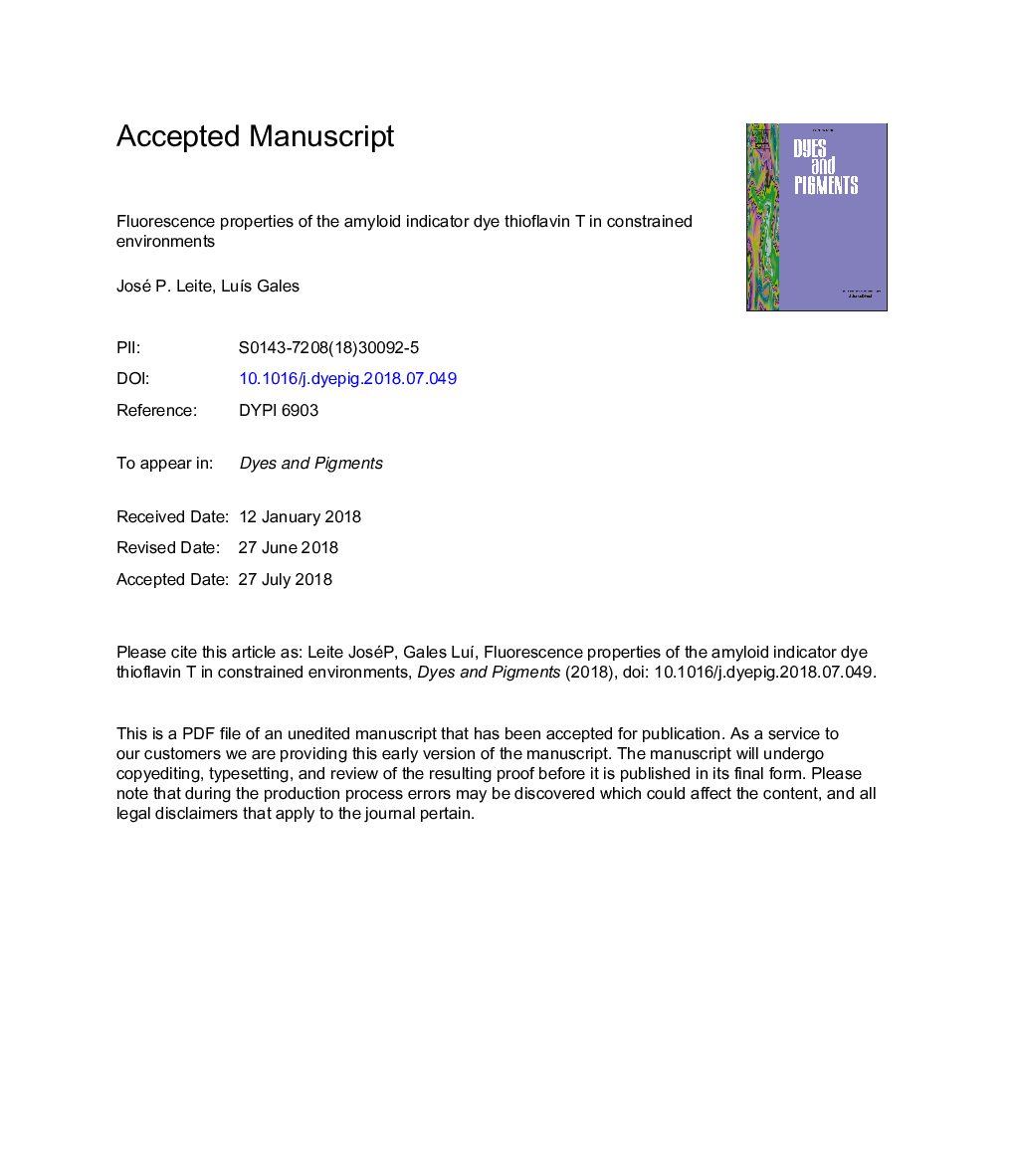| Article ID | Journal | Published Year | Pages | File Type |
|---|---|---|---|---|
| 6597523 | Dyes and Pigments | 2019 | 23 Pages |
Abstract
Proteins and peptides may lose their structural and functional properties and form amyloid-like fibrous deposits that are associated with more than 20 diseases. Several biophysical methods are used to classify a protein aggregate as amyloid; among them, thioflavin T (ThT) fluorescence is certainly the most used in vitro. Nevertheless, the molecular basis of ThT binding to amyloid fibrils and its implications in the changes of the photophysical properties of ThT are poorly understood. Here, we investigated the ThT fluorescence behaviour in four crystalline frameworks in which the ThT molecules are (i) packed in a rigid dimeric conformation or (ii) disordered in porous crystals with different cage dimensions. Our results show that ThT fluorescence is enhanced when this fluorophore is adsorbed in the flat surfaces of large pores. ThT molecules trapped in a rigid conformation in small crystal cages show very weak ThT fluorescence.
Related Topics
Physical Sciences and Engineering
Chemical Engineering
Chemical Engineering (General)
Authors
José P. Leite, LuÃs Gales,
